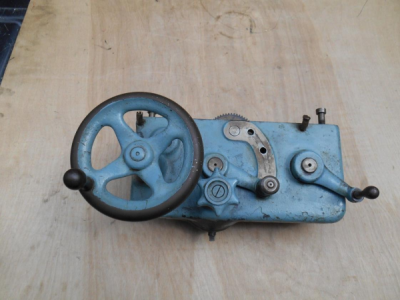Yes books are great and I enjoy the ones I have but I am not sure the operators manuals discuss the basic controls thoroughly, sorta like learning to drive different automobiles.
Are you using a small radius on the tip of your cutting tool? I have fond this helps even when hand feeding. Try as we might it is difficult to move the carriage small distances uniformly per revolution of the spindle when hand feeding but the lead screw will do that extremely well.
A lot has been said in the pre-cedng posts about fixed carriage stops, believe every word about potential damage. IMHO metal working machines are like an automobile, they won't drive themselves!
Have a good day
Ray

